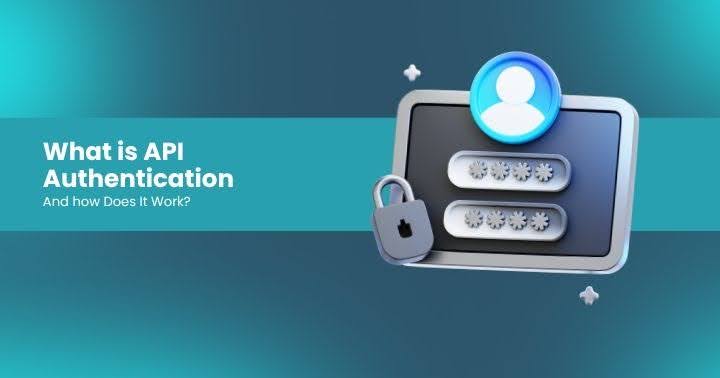Unauthenticated API Endpoints: The Silent Threat to Your Application’s Security
Unauthenticated API endpoints are the unlocked front doors of your application—how many are you leaving wide open? Learn how seemingly benign login and password reset functions can cascade into full account takeovers, data leakage, and privilege escalation—and exactly what to do about it.
.png)
Unauthenticated API Endpoints: The Silent Threat to Your Application’s Security
By Evan Isaac, Senior Application Security Consultant & Founder of Emory Security
From login portals to password reset forms, unauthenticated API endpoints are everywhere in modern web and mobile apps. They're meant to welcome users—but too often, they’re also welcoming attackers. In this breakdown from APISEC|CON, Evan Isaac shares real-world examples, attacker techniques, and practical remediations to help DevSecOps and AppSec teams lock down these common vulnerabilities.
What Are Unauthenticated API Endpoints?
Unauthenticated endpoints are API routes that don’t require login credentials—think /login, /register, /forgot-password, or /contact-us. They’re often the first points of contact for users…and attackers.
These endpoints are publicly exposed, making them prime real estate for vulnerabilities like:
- Verbose Error Messaging
- User Enumeration
- Mass Assignment (now PPLA)
- Email Flooding
- HTML Injection & Stored XSS
Attackers target these endpoints to gather intel, brute-force credentials, or pivot deeper into the system.
Real-World Exploits & Chain Attacks
1. Verbose Errors Enable Enumeration
Example:
http
CopyEdit
POST /login
{ "username": "Mishka", "password": "Mimi$" }
→ 400 Bad Request: "User not found"
Switch to a valid username?
http
CopyEdit
→ 401 Unauthorized: "Invalid password"
📌 Result: The attacker confirms valid usernames and moves to credential stuffing.
2. Mass Assignment Becomes PPLA
An exposed role=standard response in /register hints at possible elevation:
json
CopyEdit
{
"username": "test",
"password": "pass",
"role": "standard"
}
Attacker modifies request to:
json
CopyEdit
{ "role": "admin" }
📌 Result: Privilege escalation via backend trust in client-supplied data.
3. Password Reset Logic Flaws = ATO
Some APIs leak reset codes directly in the response:
json
CopyEdit
{ "reset_code": "123456", "email": "target@domain.com" }
📌 Result: Unauthenticated Account Takeover (ATO) in seconds.
4. Rich Text Editors & HTML Injection
Even when XSS is blocked, rich text editors allow HTML injection:
html
CopyEdit
<meta http-equiv="refresh" content="0;url=https://evil.com">
📌 Result: User is silently redirected—great for phishing or defacement.
5. Email Flooding via Lack of Rate Limiting
Reset password endpoints lacking request throttling can be spammed to consume resources and degrade reputation.
📌 Result: Domain blacklisting, user frustration, increased cloud/email costs.
How to Mitigate These Risks
✅ Implement Generic Error Messaging
Avoid hinting at which part failed—say “invalid username or password,” not “user not found.”
✅ Rate Limit All Sensitive Endpoints
Thwart brute-force attempts, spam floods, and automated enumeration.
✅ Validate Inputs on Both Frontend and Backend
Never trust frontend-only sanitization—always re-validate server-side.
✅ Map Request Inputs Explicitly
Use model binding carefully and don’t blindly accept unexpected fields like role, balance, etc.
✅ Sanitize Rich Text & HTML Inputs
Use strict allow-lists for tags, and test for redirect payloads and stored HTML manipulation.
Tools for the Trade
- Burp Suite – For request interception and payload manipulation
- Authorize/Burp Extension – Detects role-based access control flaws
- Obsidian/Excel – For tracking attack surface and findings during pentests
Chaining Vulnerabilities for Bigger Impact
Sometimes, the real danger isn’t a single bug—it’s a series of low-to-medium vulnerabilities that add up to a critical exploit:
- Find a verbose login response → user enumeration.
- Identify mass assignment in registration → privilege escalation.
- Abuse password reset endpoint → account takeover.
💥 Result: Admin-level access without credentials.
Final Thoughts: The Power of First Impressions
The first endpoints a user sees are also the first that attackers probe. These endpoints must be held to the highest security standards—even if they don’t seem “sensitive.” The cost of overlooking unauthenticated APIs? Data leaks, user trust loss, and full application compromise.
Watch the Talk & Follow Evan
Evan Isaac’s full APISEC|CON talk will be available on APIsec University's YouTube channel. You can also follow Evan and Emory Security on LinkedIn and YouTube for more free API security content.
🔗 Connect with Evan on LinkedIn
🔗 Check out Emory Security on YouTube
Latest Articles
Earn your APIsec University Certificate
Earn an APIsec University certificate and badge for completing any of our courses.
Post your badge on LinkedIn and share your accomplishments. You can even receive CPE credits for taking these courses.











